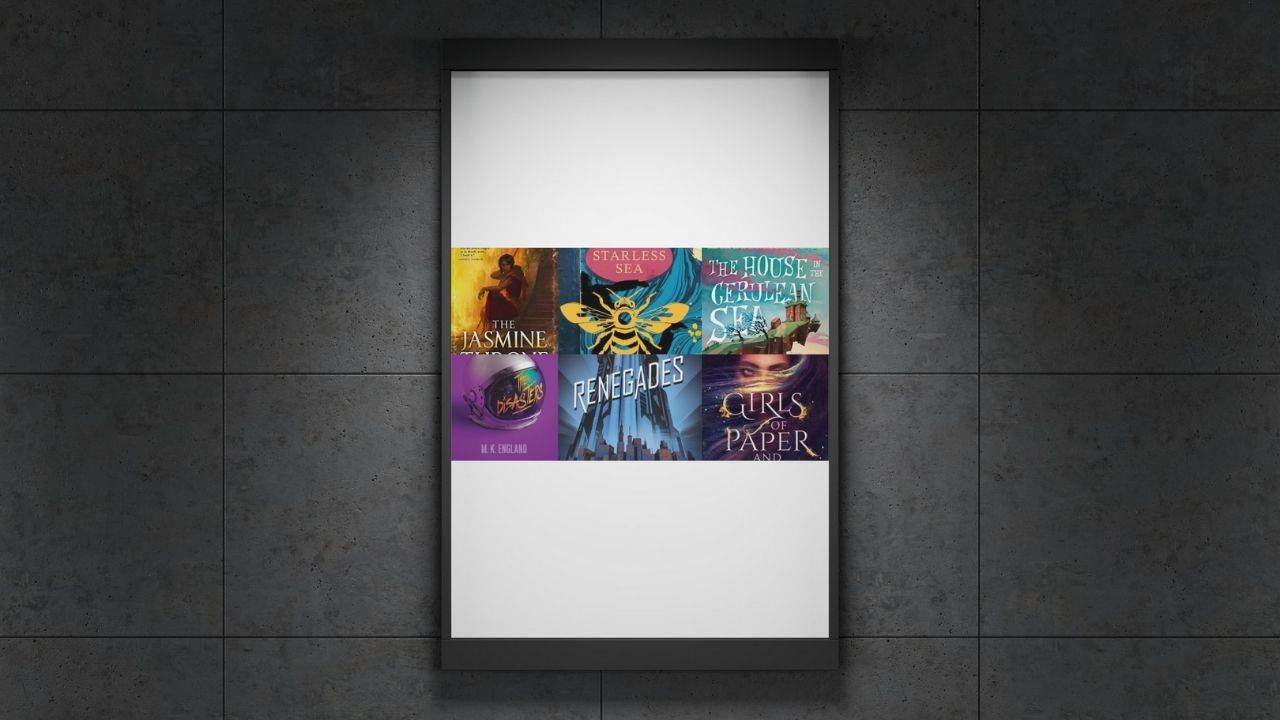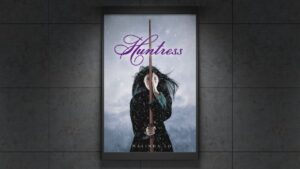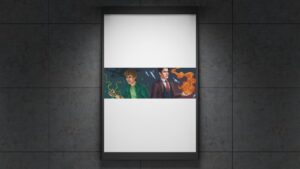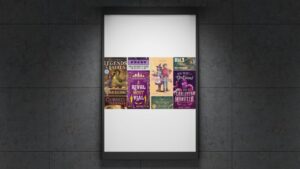In recent years, the landscape of fantasy literature has seen a growing and vibrant representation of LGBTQIA+ characters, reflecting a broader push for diversity and inclusion across genres. Fantasy, with its boundless worlds and complex narratives, provides an ideal canvas for exploring themes of identity, love, and power dynamics, offering diverse portrayals that resonate with readers from all walks of life. This article focuses on five LGBTQIA+ fantasy series that not only highlight queer representation but also skillfully intertwine political intrigue with magical elements, creating rich, multifaceted worlds.
The combination of political dynamics and magic has always been a compelling aspect of fantasy literature. The intricacies of power struggles, alliances, and governance provide a thrilling backdrop for stories of magical warfare, ancient prophecies, and enchanted realms. When infused with LGBTQIA+ representation, these elements take on even greater significance, highlighting the intersection of personal identity and societal power structures. In these series, magic and politics are not only tools of survival and conquest but also avenues for exploring self-discovery, resistance, and the quest for belonging.
The Priory of the Orange Tree by Samantha Shannon
- Plot Overview:The Priory of the Orange Tree is set in a sprawling, epic world where dragons and magic are integral to the balance of power. The narrative weaves through multiple perspectives, primarily focusing on the continent of Ostenra, where a powerful empire is on the brink of war with a dangerous dragon cult. At the heart of the conflict is the fight to protect an ancient and mystical dragon species, which can either save or destroy the world. Political intrigue runs deep as rival nations struggle for power, all while navigating the looming threat of dragon destruction. The story’s characters find themselves caught in the complex web of diplomacy, war, and prophecy.
- LGBTQIA+ Representation: One of the most celebrated aspects of The Priory of the Orange Tree is its diverse representation of LGBTQIA+ characters and relationships. The story features a strong and prominent lesbian romance between the dragon-riding warrior, Tane, and the noblewoman, Nerea. Additionally, the novel includes bisexual and queer characters who play pivotal roles in the narrative, such as the dragon-rider, Loth, whose sexual orientation is explored within the broader context of her journey. The relationships in the book are integral to character development, allowing for deep emotional connections that transcend traditional fantasy tropes.
- Magical Elements: Magic in The Priory of the Orange Tree is deeply intertwined with the political landscape. The dragons themselves are not only mystical creatures but powerful forces that shape the fate of entire nations. The novel presents a unique system of magic that is tied to elemental forces, with different cultures practicing distinct magical traditions. The ability to control dragons, communicate with them, or summon them is a rare and political tool, giving those who possess it an undeniable advantage in the global power struggles. Magic is also crucial for maintaining the balance between the natural world and the forces that threaten it, adding layers of complexity to the plot.
- Political Intrigue: The political tension in The Priory of the Orange Tree is driven by the conflict between the dragon-riders, the ruling empires, and the ancient cults seeking to awaken long-dormant dragons. Political machinations abound as various factions vie for control of the dragons and, by extension, the fate of the world. The intricate diplomacy between kingdoms, the threat of invasion, and the push for alliances shape the characters’ decisions, making the political dynamics a key driver of the plot. Characters must navigate not only their personal journeys but also the shifting allegiances and betrayals that come with power struggles on a grand scale.
- Why It’s Worth Reading:The Priory of the Orange Tree stands out as a masterful blend of LGBTQIA+ representation, political intrigue, and magical adventure. The series excels at world-building, creating a richly detailed universe where every political move is fraught with consequences. The inclusion of LGBTQIA+ characters is not an afterthought but an integral part of the narrative, making it a standout in the genre. The book combines elements of high fantasy with modern themes of identity and power, creating a story that is both immersive and thought-provoking. For readers looking for a tale of epic proportions that champions diversity while exploring complex political and magical systems, The Priory of the Orange Tree is an essential read.
A Song of Ice and Fire by George R.R. Martin
- Plot Overview:A Song of Ice and Fire is set in the vast and intricate world of Westeros and Essos, where noble families vie for control of the Iron Throne, the symbol of ultimate power. The series is known for its detailed world-building, where politics, religion, and history converge to shape the fate of the realms. The novel’s central premise revolves around the dynastic struggle between the various houses of Westeros, each attempting to claim or retain their power. Meanwhile, the growing threat from the mystical and ancient forces beyond the Wall, including the White Walkers, introduces a secondary layer of conflict. Political scheming, betrayals, and shifting alliances dominate the story as characters navigate the dangerous and often treacherous terrain of both politics and war.
- LGBTQIA+ Representation: While A Song of Ice and Fire doesn’t always center LGBTQIA+ characters, it features significant queer representation woven throughout the series. One of the most prominent examples is the character of Renly Baratheon, who is depicted as having a romantic and sexual relationship with Ser Loras Tyrell, often referred to as the “Knight of Flowers.” Their love affair is one of the more subtle but impactful elements of the political drama, as their relationship is not only a source of personal conflict but also has ramifications for power dynamics in the realm. Additionally, the series presents other queer characters in a more nuanced, less conventional manner, emphasizing how identity, desire, and love intersect with the larger political landscape of Westeros.
- Magical Elements: Magic in A Song of Ice and Fire is complex and multifaceted, often intertwined with the natural world and the fabric of the narrative itself. The most noticeable magical elements include the mysterious powers of the Red Priests and Priestesses, such as Melisandre, who uses fire magic and prophecy. The return of dragons, once thought extinct, introduces a powerful magical force that reshapes the political landscape and offers new power struggles. The warging abilities of the Stark children, especially Bran Stark, who can enter the minds of animals and people, also add a layer of magic that influences political decisions and personal growth. These magical elements are not only central to the plot but also influence the characters’ strategies and ambitions, creating a dynamic interplay between magic and politics.
- Political Intrigue:A Song of Ice and Fire is renowned for its political intrigue. The entire story is a delicate dance of power plays, shifting alliances, and betrayals among the noble houses of Westeros. From the Lannisters’ manipulation of the throne to the Stark family’s quest for vengeance, the political tension is the driving force behind the narrative. The game of thrones is constantly changing, with each move made by one house influencing the fate of another. Beyond the primary conflict for the throne, the story also delves deeply into regional politics, the struggle between different faiths, and the role of war and diplomacy in achieving power. The political landscape is intricate, and characters must constantly weigh personal loyalty against the quest for survival and power.
- Why It’s Worth Reading:A Song of Ice and Fire is one of the most impactful and influential fantasy series ever written, drawing readers in with its complex characters, world-building, and political intrigue. The series appeals to fans of both traditional epic fantasy and those who enjoy nuanced, politically-driven narratives. Its inclusion of LGBTQIA+ characters, though subtle, reflects a commitment to diversity within a world that often challenges traditional norms. The interplay between politics and magic is expertly crafted, adding layers of depth to an already complex narrative. For readers who enjoy dark, intricate, and unpredictable stories with a blend of high fantasy and political maneuvering, A Song of Ice and Fire remains an essential read. The series’ lasting influence on both fantasy and television has cemented its place in the genre as a compelling exploration of power, identity, and survival.
The Curse of Chalion by Lois McMaster Bujold
- Plot Overview:The Curse of Chalion is set in a medieval-inspired world where gods and magic play a significant role in the lives of its people. The story follows Cazaril, a former soldier who has been cursed and is struggling to find redemption. He becomes the tutor to the royal princess, who is embroiled in a political and religious struggle for her inheritance. The setting is richly detailed, with distinct cultures, religions, and political landscapes that influence the characters’ actions and fates. The world-building in The Curse of Chalion is intricate, with a particular focus on the interaction between divine powers and the everyday lives of its characters, all of whom are caught in a web of political maneuvering, personal vendettas, and faith.
- LGBTQIA+ Representation:The Curse of Chalion subtly includes LGBTQIA+ representation through the character of Dyani, a noblewoman who has a romantic relationship with a female companion. While the series is not centered on LGBTQIA+ themes, these relationships are integrated into the narrative without drawing attention away from the main plot. The exploration of love and identity in the series is treated with respect and complexity, highlighting the diversity of the characters’ emotional lives. In addition, the inclusion of these relationships speaks to the broader theme of personal agency and the tension between societal expectations and individual desires.
- Magical Elements: The magical system in The Curse of Chalion is deeply tied to religion and the gods who govern different aspects of life. Magic is not a simple tool, but a force that interacts with the divine, with the gods themselves intervening in human affairs to maintain balance and order. The central supernatural power in the series is the “curse” that plagues the royal family, which is a manifestation of divine displeasure. Cazaril’s struggle with the curse, and his eventual ability to navigate the divine powers, drives much of the plot. Magic is not only a political tool but also a personal burden for many characters, impacting their decisions and shaping the political landscape.
- Political Intrigue: Political intrigue is at the heart of The Curse of Chalion, with court politics and power struggles shaping much of the narrative. The royal family is embroiled in factionalism, as different groups vie for influence over the princess’s future and the direction of the kingdom. Cazaril finds himself caught in a web of loyalty, betrayal, and ambition as he navigates his role as a tutor while being forced to confront his own past. The court is rife with power plays, and even the gods themselves are not immune to being drawn into human politics. The intersection of faith, magic, and power dynamics plays a key role in the unfolding drama, highlighting the complexity of ruling and the personal sacrifices required to maintain power.
- Why It’s Worth Reading:The Curse of Chalion is an exceptional blend of fantasy, political drama, and deep character development. The themes of duty, redemption, and the consequences of power are explored in a nuanced and captivating way. The interplay of divine influence and human agency creates a complex backdrop against which the characters’ personal journeys unfold. The world-building is rich and immersive, with a strong focus on religion and magic as forces that shape the political and social structures of the world. For readers who enjoy intricate plots, thoughtful character arcs, and a world where politics and personal beliefs are in constant tension, The Curse of Chalion is a must-read. Its subtle yet meaningful LGBTQIA+ representation adds another layer of depth to the story, making it a standout in the realm of fantasy literature.
The Enchanted Throne
- Plot Overview:The Enchanted Throne immerses readers in a world where magic is both a powerful tool and a dangerous weapon. The series follows the rise of a young monarch, whose rule is threatened by rival factions within the kingdom and the ever-present manipulation of magical forces. The plot masterfully blends political intrigue with high fantasy, as alliances are forged and broken, and the very fabric of power is often decided by who controls the magic. Throughout the series, readers will be captivated by the complex characters who navigate a world where politics, power, and magic intertwine in unexpected and perilous ways.
- LGBTQIA+ Representation:The series features several prominent LGBTQIA+ characters, each with their own unique roles in the political and magical landscape. One of the central characters is a queer prince whose love for another royal disrupts the carefully constructed power dynamics of their families. Their relationship is not only a personal journey but also a political one, as their union challenges traditional norms and sets off a chain reaction that threatens both their kingdom’s stability and the alliances between neighboring realms. The portrayal of LGBTQIA+ characters is nuanced, exploring how their identities shape their choices and impact the power struggles within the court.
- Magical Elements:In The Enchanted Throne, magic is an integral part of the political system, with powerful mages holding sway over national decisions. The magic system is based on elemental forces, with each mage having the ability to command a specific element—earth, water, fire, or air—through ancient rituals and incantations. However, magic is not just a tool; it is a currency. Mages are sought after as allies or enemies, and their loyalty can shift the balance of power. The series delves into how magic is used to manipulate, deceive, and control, with magical elements often determining the outcome of battles and political maneuvers.
- Political Intrigue:The political landscape in The Enchanted Throne is filled with shifting alliances, treacherous betrayals, and deep-seated power struggles. The ruling families, each with their own magical abilities, engage in a high-stakes game of diplomacy, espionage, and sabotage. Behind the scenes, secret organizations and covert agents work tirelessly to influence the throne’s succession and secure their own power. The intricate web of alliances and rivalries often keeps readers on the edge of their seat, as characters navigate an ever-changing world where trust is a rare commodity, and political survival is a daily battle.
- Why It’s Worth Reading:The Enchanted Throne is an exceptional series for readers who love a blend of fantasy, political intrigue, and rich character development. The series expertly combines the thrill of magical battles and court politics with deeply human stories of love, loyalty, and betrayal. The political narrative is intricately woven, making each twist and turn of the plot feel earned and impactful. Meanwhile, the representation of LGBTQIA+ characters adds depth to the story, exploring themes of identity and power. For those who enjoy fantasy with a rich political framework and character-driven storytelling, The Enchanted Throne is a must-read.
Throne of Ash and Steel
- Plot Overview:Throne of Ash and Steel is a captivating series that masterfully combines elements of magic and political maneuvering. Set in a realm where the throne is coveted by many and power is anything but secure, the plot follows multiple characters vying for control of a crumbling empire. As the struggle intensifies, the line between allies and enemies blurs, with each character leveraging their magical abilities to gain advantage in a world of shifting allegiances. At the heart of the story is the question of who will ultimately control the throne, and how much will be sacrificed in the process.
- LGBTQIA+ Representation: The series is notable for its nuanced and thoughtful portrayal of LGBTQIA+ characters. One of the main characters, a brilliant strategist and mage, is a queer woman whose political and magical expertise places her in the center of the power struggle. Her relationship with another key figure, a nonbinary noble, adds a layer of complexity to the political environment, as their alliance sparks both admiration and animosity from different factions. Their love and loyalty become central to the larger narrative, challenging traditional roles and perceptions, and highlighting the way personal identity and political power can intertwine in a highly charged world.
- Magical Elements: Magic in Throne of Ash and Steel is intricately tied to the political landscape. The ability to wield magic is not only a source of personal strength but also a tool for gaining power and influence. Different magical factions control distinct magical disciplines—such as necromancy, illusion, and elemental forces—and each one plays a pivotal role in the power dynamics of the realm. Mages are often seen as both assets and threats, with the ruling class using magic to maintain control and eliminate their enemies. The development of the characters’ magical abilities is deeply intertwined with their political ambitions, driving much of the conflict and personal development throughout the series.
- Political Intrigue: The political stakes in Throne of Ash and Steel are incredibly high. The empire is on the brink of collapse, and various factions—ranging from noble houses to rebellious groups—are all vying for power. The series delves deep into the mechanics of political manipulation, from covert assassinations and strategic marriages to public displays of loyalty and betrayal. Characters constantly maneuver to outwit each other, with every decision carrying potentially dire consequences. The use of magic amplifies these stakes, as the power to control, deceive, or eliminate rivals can shift the balance of power in an instant. The narrative keeps readers on edge as the alliances shift, and the true motives of each character remain uncertain.
- Why It’s Worth Reading:Throne of Ash and Steel is a standout series for those who enjoy complex, politically charged fantasy with rich magical elements. It excels in blending intricate political drama with well-developed characters whose personal identities shape the larger narrative. The LGBTQIA+ representation is woven seamlessly into the plot, adding depth and authenticity to the characters’ experiences and motivations. The way magic is used to both fuel and reflect the political machinations of the story adds an exciting layer of intrigue. For readers seeking a series that combines high-stakes political strategy, personal development, and compelling fantasy, Throne of Ash and Steel offers a highly engaging experience.
Conclusion
Throughout this article, we’ve explored five exceptional fantasy series that blend political intrigue, magical systems, and thoughtful LGBTQIA+ representation. Each of these series stands out not only for its intricate plots and compelling characters but also for its nuanced portrayal of diverse identities within a politically charged world. From high-stakes power struggles to complex relationships that challenge societal norms, these stories showcase how fantasy can serve as a mirror to real-world issues, offering readers both escapism and insight.
These series demonstrate that fantasy can be a powerful tool for exploring themes of power, identity, and resistance, while also highlighting the importance of diverse voices and experiences in storytelling. The LGBTQIA+ representation within these worlds isn’t just a backdrop; it’s integral to the development of both the characters and the political dynamics that shape the narrative. By focusing on characters who are often marginalized, these authors bring depth and authenticity to their work, creating stories that resonate with a wider range of readers.
As we look to the future of fantasy literature, it’s clear that diverse representation—especially of LGBTQIA+ characters—will continue to be a vital part of the genre. It’s essential to have stories that reflect the richness of human experience, allowing readers of all backgrounds to see themselves within the pages of the books they read. The combination of magic, politics, and inclusive representation creates a powerful storytelling formula that elevates the genre and engages readers in meaningful ways.
If you haven’t already, we encourage you to dive into these five remarkable series and immerse yourself in their captivating worlds of magic, intrigue, and diverse characters. Share your thoughts and experiences with others, and if you know of any other LGBTQIA+ fantasy series that blend political intrigue and magic, don’t hesitate to recommend them. The more diverse voices and perspectives we champion, the richer the world of fantasy becomes.




